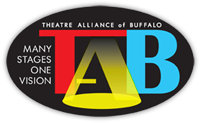 |
| Search |
|
|

|
 |
Local Opinions
In his opening remarks Kevin Gaughan stressed the need to build strong, vibrant communities and the difficulty of doing so in an area that’s dying because of too much government.
Drive around Western New York, look around, and ask yourself, where are some of the most vibrant, active communities? They are villages, like East Aurora, Orchard Park, Williamsville, Lancaster, and Hamburg, to name a few.
Why is that? In my opinion it is because they have governments that put the residents first. Governments of, for, and by the people. Governments that aren’t controlled by big, national political parties. Rather governments made up of people of all stripes who work together to build strong, vibrant communities.
~
Before Mr. Gaughan revealed his plan, he presented statistics about Williamsville and the cost of its government. The statistics are accurate. Some of the conclusions he drew from them are debatable.
Gaughan’s statistics cover a ten-year period from 1999 to 2009.
The United States Census Bureau does not have data available for Williamsville for the estimated counts in 2006 and 2008.* The 2010 census is currently being prepared.
In order to back up certain arguments that counter Gaughan’s conclusions, statistics are necessary. The statistics used in this article come from City-Data.com and can be viewed by clicking on the link following the double asterisks (**) below.
~
Mr. Gaughan started by citing the drop in Williamsville’s population. He said in 1970 the population was 6,800 (+/-) down to 5,100 (5,126 - 2009 US Census estimate*) today, a 25 percent drop.
~
According to Gaughan, in the last ten years Williamsville’s budget increased by 16 percent.
In my opinion, a 16 percent increase is a sign of a fiscally conservative government.
Consider this, according to the United States Bureau of Labor Statistics; the inflation rate for the period from 1999 to 2009 is 28.77 percent. ***
Williamsville’s budget increase is 12.77 percentage points lower than the rate of inflation.
~
Gaughan next topic was employee benefits, which increased by 60%.
With the exception of health insurance and a few other items, the largest increase in employee benefits is retirement benefits.
Retirement benefits are set and controlled by New York State, not Williamsville. During the dotcom boom of the 1990’s, the state’s investment portfolio performed magnificently. It performed so well that the state reduced local payments to the system. When the dotcom bubble burst, and the state’s retirement portfolio crashed, they had to significantly increase payments from local governments. The terrorist attacks on September 11, 2001 and the current recession exacerbated the situation.
Williamsville is not the only community in New York State to experience this problem. Due to New York State’s shortsighted investment strategy, every community in the State now has to deal with it.
The second largest increase is due to health insurance costs. That is a nation-wide problem that is not the fault of, or completely under the control of the Williamsville Village Board. Yes, there are things Williamsville can do to reduce the cost of health insurance. But Williamsville cannot control the bulk of the costs.
~
The next increase Gaughan cited was the property tax levy, which increased 49 percent.
However, that increase may be attributed to a vibrant economy.
Consider this, in 2000, there were 1,465 single-family homes in Williamsville.* In 2008 there were 1,579. ** (****)
In 2000, the median value of a home was $102,000.* In 2008, the median value was $164,466. The median value of a home increased $62,466, or 61 percent. These increases are a sign of a healthy, vibrant community, where people want to live.
The value of Williamsville’s single-family homes increased 12 full percentage points higher than the tax levy.
During his introductory comments, tax levy comments, and the public comment session, Kevin Gaughan said the increase in the property tax levy was an indication that fewer people were paying higher property taxes.
It is true the population declined. It’s also true that the number of developed properties increased. However, property taxes are levied against properties, not people. Even with the population decline, it stands to reason that, if there are more developed properties, and more owners, more people are paying property taxes.
~
Gaughan went on to say that charges for services increased 12 percent.
Not knowing what charges for services represent in Williamsville, that point will be conceded.
~
The next item to be examined is sales tax revenue. According to Gaughan, sales tax revenue increased 40%.
Gaughan’s argument is we pay the highest sales tax revenue in the state and as the population decreases, fewer and fewer people are paying higher taxes. That point is unarguable. It is a fact.
However, village, town, and city governments do not set the sales tax rates. The state and county do.
An increase in sales tax revenue can be viewed as a sign of a healthy, vibrant village.
Sales tax is distributed in two ways. Six months out of the year, municipalities receive sales tax income based on the assessed value of property in their municipality. The other six months income is based on sales within the municipality. The formula rotates from month to month. The first month your income is based on one formula, the second month it’s based on the other formula, and so on.
The increase in Williamsville’s sales tax revenues reflects a healthy economic climate where property values are up and sales of taxable goods and services increased.
The sales tax situation in Erie County is deplorable. Williamsville is not responsible for it and has no control it. Neither do the other villages, towns and cities in Erie County.
~
The next two items on Gaughan’s agenda were State aid and Federal Aid. State aid was down 27 percent and Federal aid was up 28 percent.
~
At the risk of repeating myself, take a close look at the Village of Williamsville. Their Main Street business district is one of the most dynamic in Western New York.
As Kevin Gaughan said, its parks are magnificent, its homes are heartbreakingly beautiful.
Williamsville is a community that IS NOT BROKEN.
SO WHY FIX IT?
~
* Census Bureau Williamsville Fact Sheet
**CityData.com – Williamsville
***U.S. Bureau of Labor Statistics
****(Note. In this comparison, I only included one unit, single-family dwellings. Apartment homes, town houses, and condos were not included.)
© Copyright 2023 - Speakupwny.com
hosted by Online Media, Inc
Buffalo Web Design and Web Hosting
Top of Page
|
|
 |
Local Opinions
Latest Headlines
|




|
Buffalo Web hosting and Buffalo Web Design By OnLineMedia, Inc
www.olm1.com
Part of
www.onlinebuffalo.com
|


